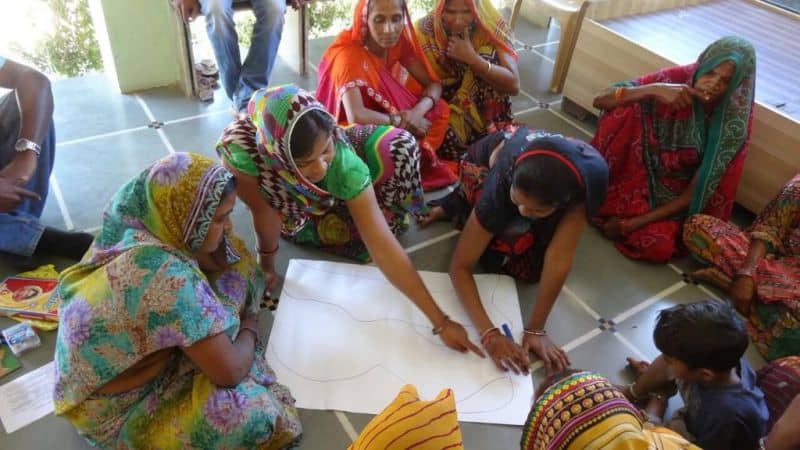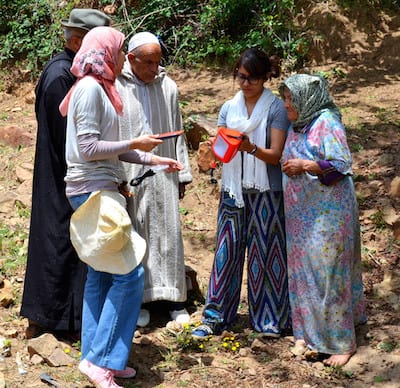NexThought Monday – Lean Research: Introducing a Movement for Change
As researchers in international development, we often hear colleagues describe 100- to 200-question surveys that take hours to administer. We have heard many stories in which a boss or donor says, “While we have the farmers in the room, why not ask a few more questions? We might use that data in the future.” We’ve also seen plenty of rigorous studies produce results that sit on the proverbial shelf and we’ve heard communities ask, “Why do you keep asking us the same questions every year, and what have you done with the data?”
These stories and others led us to begin reimagining the research process. What if research participants enjoyed the experience and found it valuable? What if we asked questions that were relevant to participants? What if the data were actually used to make decisions? And what if we reduced the burden and waste in the research process?
Lean research, led by MIT D-Lab, the Fletcher School of Law and Diplomacy at Tufts University and Root Capital, is creating a space for researchers to address these questions and conduct research that is not only rigorous, but also respectful, relevant and right-sized. Lean research is a framework to guide field research in the contexts of international development and humanitarian work. Drawing from human-centered design, participatory research and lean production, it emphasizes the following principles, what we call “the four Rs”:
- Rigor: Follow good research practices for your discipline or field of practice
- Respect: Maximize the value of the experience and outputs for research subjects and stakeholders, including creating an opportunity for them to enjoy the experience, reject participation in the study and review and refute findings
- Relevance: Address priority issues for stakeholders, including research subjects, and produce results that are understandable, accessible and actionable
- Right-sizing: Use only the protocols, “human subjects” and resources necessary to collect data that informs decisions
When used as a guiding framework, these four principles have the potential to improve the quality and accuracy of the data gathered by social enterprises and other organizations, increase the usefulness of the data and enable the research process to generate benefits for communities, including improved relationships with local stakeholders and greater access to data for decision-making.
A shift in thinking and a movement underfoot
The case for lean research is supported by evidence from both the literature and practitioner experiences. The Lean Research Working Paper and the Root Capital working paper “A ‘Client-Centric’ Approach: Impact Evaluation that Creates Value for Participants” provide examples and a strong case for why this approach is necessary. There has also been a shift in the international development field to emphasize lean or right-fit monitoring, evaluation and research through Acumen’s Lean Data Initiative and Innovations for Poverty Action’s Goldilocks Project. Indeed, a lean research community of practice has been developing over the past two years. It includes over 120 researchers, practitioners, donors, monitoring and evaluation specialists, and policymakers, who are eager to collaborate and flesh out the details of the lean approach. They have seen or participated in too many three-hour-long interviews with farmers during harvest time, which produced results that were never used. They want to change the way research is conducted.

Women from Ahmedabad, India participate in a water mapping exercise as a part of an MIT evaluation of water test kits, which incorporated lean research principles. (Image credit: MIT Comprehensive Initiative on Technology Evaluation)
What about this is “lean”?
Although lean research is loosely related to other branches of lean, such as lean experimentation and lean start-up methodology, the practice of lean production is where we find our inspiration. Lean production, as pioneered by Toyota Motor Corp. in the 1950s and 1960s, organizes the production process around the knowledge and needs of the workers who are most directly involved in the process “on the floor.” Working in flexible teams with rotating and equally valued roles, workers are empowered to make decisions that improve their ability to do their work. Those closest to the issues resolve problems, while those at higher levels play a supporting role. This orientation enables insights from those in the production process to drive continual improvement—eliminating the unnecessary, reducing errors, and creating the “leanest” path towards production of a high-quality result.
Isn’t this just good participatory research?
The concepts at the heart of lean research have been driving improvements in manufacturing, design, research and entrepreneurship for several decades. In development research, methods such as Participatory Rural Appraisal, which engage communities as co-producers of knowledge rather than research “subjects,” have been used since the 1970s. Social science also has a rich tradition of participatory action research, which emphasizes producing research outputs that are relevant to and used by communities. However, most mainstream development research continues to view research subjects as sources of data rather than true collaborators. Lean research draws on participatory research, human-centered design and lean production, which have operated in relative isolation, and brings them together into a simple and coherent framework that provides practical guidance on how to improve field research.

D-Lab researcher Megha Hegde gathers feedback on a solar lantern as part of the D-Lab Scale-Ups off-grid energy needs assessment study in Morocco. (Image credit: MIT D-Lab)
Are there examples of Lean Research in practice?
A growing number of our peers have been experimenting with applying these principles to their research. For example, Root Capital, a nonprofit social investor that lends to farmer cooperatives, includes research questions from their clients in the impact evaluations that staff members conduct. In this way, evaluations designed to generate performance data for staff also provide useful data to client businesses to help them to improve their operations. At MIT D-Lab, researchers examining the adoption of improved cookstoves are using sensors to track stove usage and indoor air pollution, which reduces survey length and frequency, thereby decreasing the burden on the research subjects. In another study, D-Lab researchers are incorporating activities such as a dinner or dancing and using market techniques like projective methods (projecting subconscious needs onto an image) to make the research experience more fun and engaging. These are just some of the examples we are gathering from the community of practice.
How can I participate?
There is still much work to be done to develop the lean research approach. To provide initial guidance, MIT and Tufts have created a Lean Research Framework and working paper. We are also collaborating with Root Capital, the Committee on Sustainability Assessment and the Sustainable Food Lab to create a practitioner’s field guide, which will include many examples of lean research in practice.
We invite you to contribute to this growing body of evidence in several ways. If you have examples that exemplify “lean” or “un-lean” research, share them with us in the comments section following this blog. If you haven’t started to apply lean research to your work but want to try, please take a look at the Guiding Questions in the Lean Research framework, pick one or two changes you want to make, try them out and share your experience with us. You can engage in the community of practice by emailing us at leanresearch-admin@mit.edu.
The time is right to focus not only on “gold standards” of rigor, but also on research that is relevant, truly respectful, and right-sized to produce maximum value and minimize waste for all participants in the research value chain.
Top image: Eshita Dayani and Jonars Spielberg from MIT’s Comprehensive Initiative on Technology Evaluation interview a local resident about his water quality and water filter usage in Ahmedabad, India. (Image credit: MIT Comprehensive Initiative on Technology Evaluation)
Homepage Carousel image: Women from Ahmedabad, India talk with researchers from MIT as a part of the Comprehensive Initiative on Technology Evaluation’s water test kit evaluation. (Image credit: MIT Comprehensive Initiative on Technology Evaluation)
- Categories
- Impact Assessment
